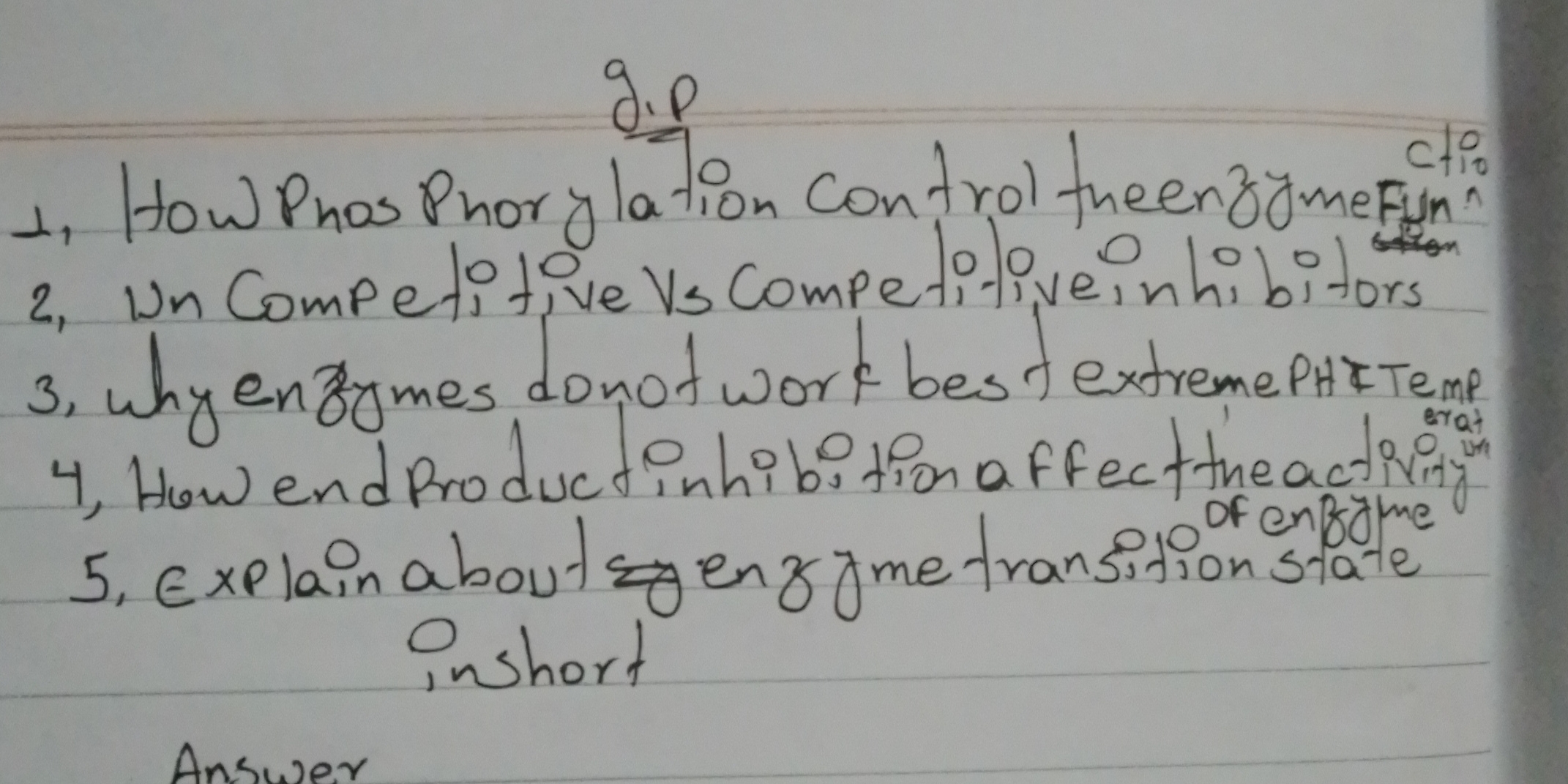1. How does phosphorylation control the enzyme functions? 2. Uncompetitive vs competitive inhibitors? 3. Why do enzymes not work best at extreme pH and temperature? 4. How does end... 1. How does phosphorylation control the enzyme functions? 2. Uncompetitive vs competitive inhibitors? 3. Why do enzymes not work best at extreme pH and temperature? 4. How does end product inhibition affect the activity of an enzyme? 5. Explain about enzyme transition state in short.

Understand the Problem
The question is asking about various aspects of enzyme regulation, including phosphorylation, types of inhibitors, enzyme effectiveness under extreme conditions, and the role of end product inhibition. These topics relate to biochemistry and enzymatic function.
Answer
Phosphorylation alters enzyme shape. Competitive vs. uncompetitive inhibitors differ in binding site. Extreme pH/temperature denature enzymes. End product inhibition stops the pathway. Transition state is a high-energy conversion stage.
- Phosphorylation controls enzyme functions by adding a phosphate group, which changes the enzyme's shape and activity. 2. Competitive inhibitors bind to the active site, while uncompetitive inhibitors bind to the enzyme-substrate complex. 3. Extreme pH and temperature denature enzymes, altering their active sites. 4. End product inhibition stops the pathway when enough product is made, binding to an enzyme earlier in the pathway. 5. The enzyme transition state is a high-energy state where the enzyme facilitates the conversion of substrates to products.
Answer for screen readers
- Phosphorylation controls enzyme functions by adding a phosphate group, which changes the enzyme's shape and activity. 2. Competitive inhibitors bind to the active site, while uncompetitive inhibitors bind to the enzyme-substrate complex. 3. Extreme pH and temperature denature enzymes, altering their active sites. 4. End product inhibition stops the pathway when enough product is made, binding to an enzyme earlier in the pathway. 5. The enzyme transition state is a high-energy state where the enzyme facilitates the conversion of substrates to products.
More Information
Phosphorylation is a key mechanism in many signaling pathways and often used in cells to activate or deactivate enzymes.
Tips
Misunderstanding inhibition types: Make sure to differentiate where inhibitors bind. Enzyme stability: Avoid extreme conditions to maintain enzyme structure.
Sources
- Enzyme regulation (article) | Khan Academy - khanacademy.org
- 6.5 Enzymes - Biology 2e | OpenStax - openstax.org
- Enzyme inhibitor - Wikipedia - en.wikipedia.org
AI-generated content may contain errors. Please verify critical information